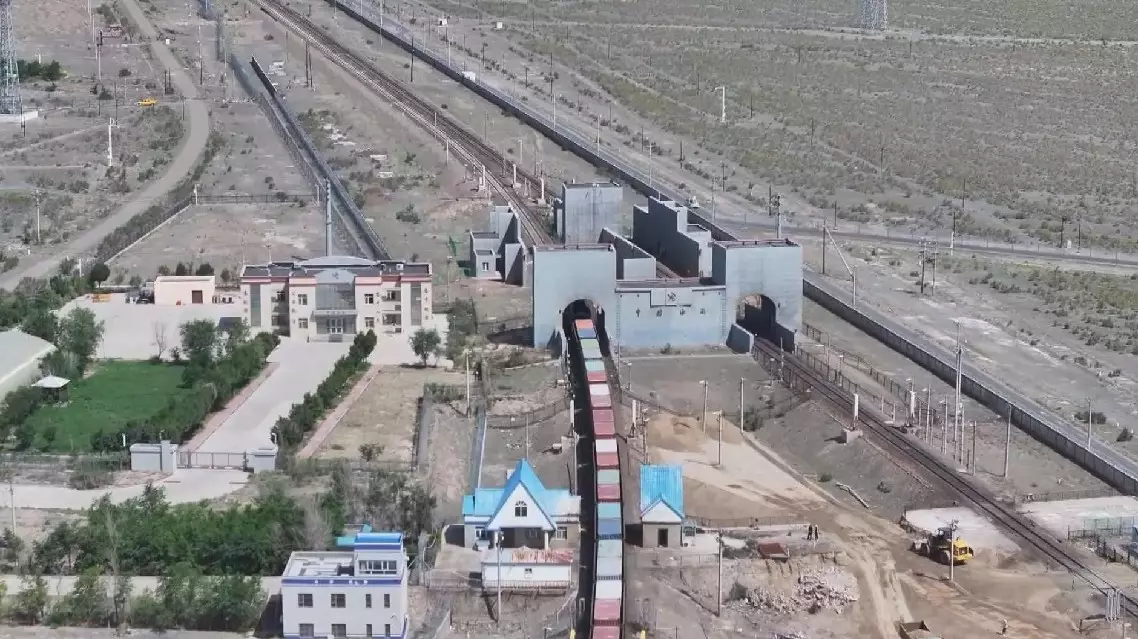As of Sept 30 this year, the number of China-Europe freight trains leaving and entering China via Alashankou Port in northwest China's Xinjiang Uygur Autonomous Region has reached 5,802, up 15.7 percent year on year.
As a crucial westbound port and the nearest rail gateway to the European Union, the freight trains arriving and departing from Alashankou Station have consistently maintained a high level of operation. The railway station collaborates with customs, border inspection, and local government departments to continuously enhance the efficiency of customs clearance for trains traveling between China and Europe, reducing the average customs clearance time to just 20 minutes.
At the same time, the station's facilities are continually being upgraded. Recently, a new comprehensive inspection area was established between Alashankou Station and the border and has officially begun operations.
"The launch of the new comprehensive inspection area is expected to reduce the waiting time for the inspection of both wide-gauge and standard-gauge railway arrival and departure lines, effectively enhancing the station's handling capacity. It is anticipated that the handling capacity for each railway type will improve by more than 15 percent," said Yan Huapeng, director of China Railway Urumqi Group's dispatching department at Alashankou Station.

Xinjiang's Alashankou port handles over 5,800 China-Europe freight trains from Jan-Sept
A "green scarf" to prevent desertification in the Taklimakan Desert in southwest China's Xinjiang Uygur Autonomous Region is expected to be completed by the end of this year. Over the past 40 years, a green belt spanning 2,761 kilometers has been established around China's largest desert, the Taklimakan Desert, aptly referred to as the "green scarf". The initiative leverages the country's Three-North Shelterbelt Forest Program (TSFP), so named because it carries out forestation in the north, northeast and northwest regions.
Currently, out of the remaining 285 kilometers of tasks combating desertification, 155 kilometers have been completed in the desert, achieving a completion rate of more than 54 percent. It is expected to complete the final flourish of the "green scarf" by the end of the year.
China has been exploring ways to combat desertification for decades and launched the TSFP in 1978. At present, the large-scale afforestation project, often called the "Great Green Wall" has entered a critical phase.
Since August last year, the country has launched three major battles against desertification under the TSFP, with the project in the Hexi Corridor-Taklimakan Desert region being one of them.
Practices such as planting desert shelter forests and building sand-control barriers have been successfully implemented there.
"Engineering sand control has meant building this straw checkerboard sand barrier. As you can see, both sides of the road are entirely covered with these straw checkerboard sand barriers, which stabilize all the sand and keep the road clear," said Abbas Eysa, head of sand control station in Qiemo County, Bayingolin Mongol Autonomous Prefecture.

"Green scarf" for fixing sand in China's largest desert to be completed by end of 2024










